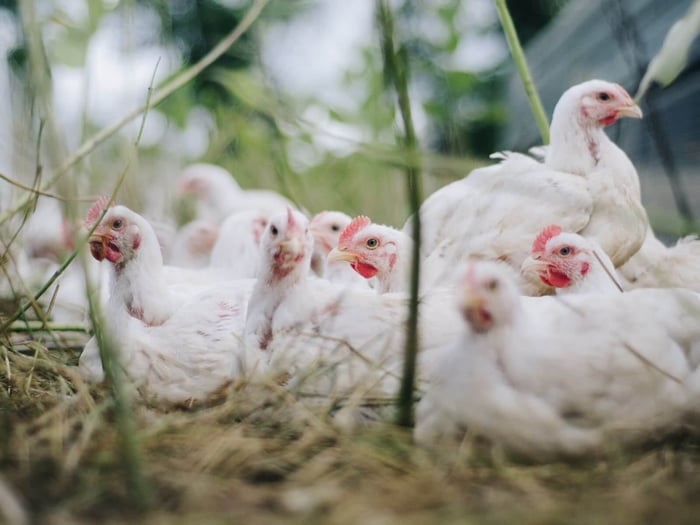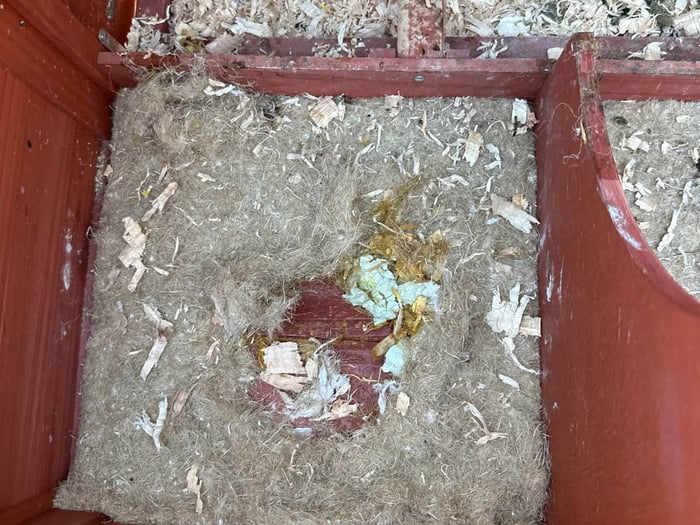Table of Contents
When Paige’s Flock Faced Chicken Mites: A Staff Story
At the Chicken Coop Company, we believe the best advice comes not just from experts but from fellow chicken keepers who have walked through challenges themselves. That’s why we love sharing real-life experiences from our team and community. Today’s story comes from Paige, who recently had her first experience dealing with chicken mites in her flock of four hens.
Chicken mites are one of the most common external parasites backyard chicken keepers encounter, but knowing that doesn’t make it any less stressful when you actually find them on your birds. In Paige’s case, the discovery was both shocking and unsettling—but it turned into a learning experience she’s eager to share with others.
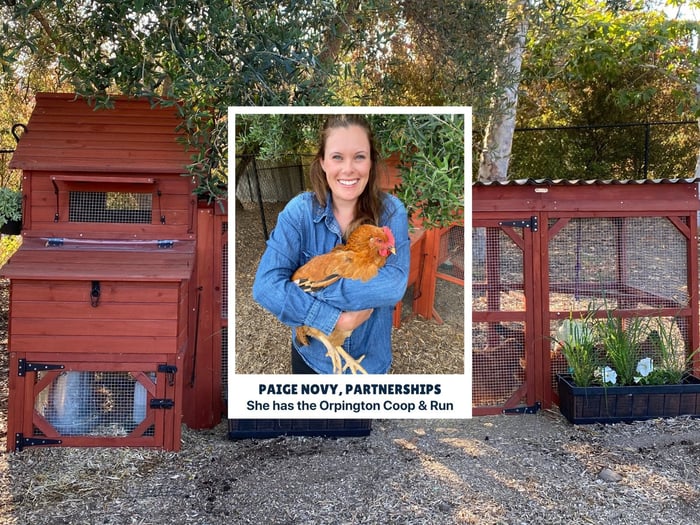
Discovering the Problem
“When I first realized my chickens had mites, it was in the worst way possible,” Paige recalled. “I became super itchy after holding one of my hens. That’s when I knew something wasn’t right.”
After putting the hen down, Paige went straight into the coop for a closer look. “I checked all of them and found tiny bugs crawling on their skin, especially under their wings. I had no idea what I was looking at, so I grabbed my phone and quickly googled ‘small bugs on chickens.’ Sure enough, they were chicken mites.”
What she discovered next was even more frustrating: it wasn’t just one or two birds. “All four of my hens had them. The whole flock was affected.”
First Steps and Initial Reaction
“I won’t lie—I panicked a little,” Paige admitted. “I immediately showered, because even though I read online that chicken mites don’t live on humans, I didn’t want to take any chances.”
Once she had calmed down, she decided to take action. Paige headed to her local feed store, where the staff helped her choose products and gave her some confidence about what to do next. “That conversation was a lifesaver. I walked out with poultry mite spray, a 50-pound bag of food-grade diatomaceous earth, and some new bedding that contained diatomaceous earth as well.”
Just like the staff that helped Paige, we also recommend using Martin’s Pen & Poultry Mite Spray for treating chicken mites. It is a safe, ready-to-use insecticide designed to quickly treat lice and mites on chickens and in poultry houses.
Diatomaceous earth (DE) may sound like something out of a science lab, but it’s actually a natural, food-grade powder made from fossilized algae. When used correctly, it’s a simple and effective way to help control external parasites like mites and lice in your flock. The fine particles work by dehydrating pests on contact, which is why many chicken keepers use it in bedding, coops, and runs. You can usually find it at most feed stores, and larger retailers like Tractor Supply or even Home Depot.
Remember - safety for you and your flock is always key! Always choose food-grade DE—never pool-grade or crystalline versions, which are harmful to lungs. ALWAYS wear a mask and protective eyewear during application, and never apply it while chickens are inside. Allow the dust to fully settle with plenty of ventilation before letting your flock back in.
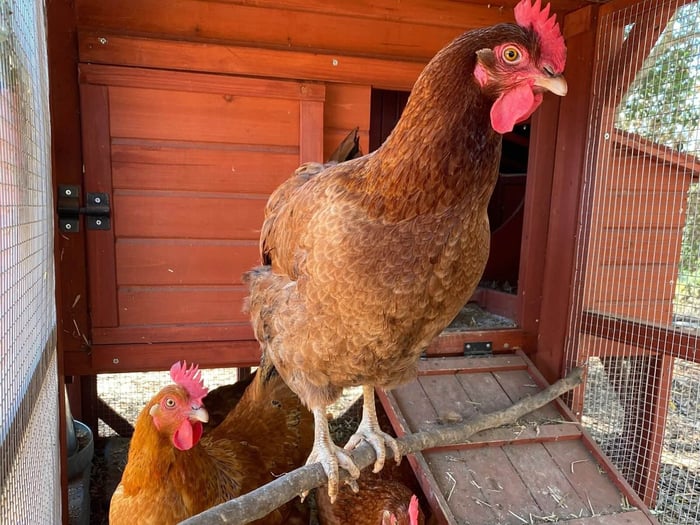
Treatment Plan: How to Eliminate Chicken Mites
Getting rid of chicken mites requires treating both your birds and their environment. Here’s the step-by-step process Paige followed to restore her flock’s health and keep her coop parasite-free.
Step 1: Protect Yourself
Before starting, always protect yourself. Wear gloves, a mask, and protective eyewear to avoid breathing in dust or sprays. Chicken mites don’t live long on humans, but the products used to control them—especially diatomaceous earth—can irritate your lungs and eyes. Make sure your chickens are out of the coop so they aren’t exposed to airborne dust during application.
Paige knew she needed to start by being protected:
“I sprayed myself with natural bug repellent, tied my hair back, put on gloves, and wore an N95 mask. Working with diatomaceous earth can be tough on your lungs, so I wasn’t taking chances.”
Step 2: Treat the Hens
Handle each chicken one at a time. Flipping a hen gently upside down helps calm her and exposes the areas where mites hide. Spray under the wings, around the vent, and along the body with a poultry-approved mite spray. Once treated, let the hens roam outside while you work on the coop and run. Treating the flock without addressing their environment won’t stop the cycle, so both steps are essential.
“I realized quickly that turning them upside down was a hack,” Paige explained. “They relaxed, and it made it much easier to spray where mites like to hide.”
Step 3: Clean the Coop
Remove all bedding from the coop and sweep out debris. Spray the coop thoroughly—walls, roosts, nesting boxes, and especially cracks and corners where chicken mites like to hide. Once it’s dry, lay down fresh bedding. Paige found that Sweet PDZ granules worked especially well since they keep the coop drier and less attractive to pests than straw.
“I pulled out all the straw bedding, swept the coop, and sprayed it top to bottom with poultry mite spray,” Paige said. “For new bedding, I used Sweet PDZ granules. It was sold as horse stall refresher, but the bigger bag made it a better deal than the small coop version.”
Step 4: Deep Clean the Run
Don’t forget the run, where mites often linger. Rake out the top layer of dirt, then spray all surfaces, including roosting bars and corners. After it dries, add a new layer of bedding. This is also a good time to provide a dust bath for your flock. Mix dry dirt with a small amount of food-grade diatomaceous earth to create a parasite-fighting dust box. As the chickens bathe, the DE coats their feathers and helps control mites naturally.
“I raked out the top layer of dirt, sprayed every nook and cranny, and soaked the roosting bars,” Paige recalled. “Once everything dried, I laid down fresh bedding and built a dust bath pile of diatomaceous earth mixed with dirt right in the middle for the girls to use.”
Step 5: Support Recovery
After treatment, keep an eye on your flock for lingering issues. Chickens may need time to adjust to new bedding or environmental changes. If they seem hesitant, encourage them back into the coop gradually. Be cautious with how much diatomaceous earth you use—too much can irritate both chickens and humans. Mixing it with dirt keeps it safer and still effective.
To support your flock’s overall health, clean feeders and waterers thoroughly and add supplements like VetRX or electrolytes if your birds seem stressed. Reapply mite spray for several days to ensure no pests remain, and check under wings regularly in the weeks following treatment.
Paige noticed some funny moments during this stage:
“The new bedding threw them off. They actually thought it was lava and wouldn’t step on it! I had to place them on the bedding one by one until they figured it out. They also had a bit of a sniffle, which I think came from too much DE. Mixing in dirt and giving them VetRX for a few days helped a lot.”
Immediate Results
“The improvement was almost instant,” Paige said with relief. “After treating both the chickens and the coop, I didn’t see mites anymore. The girls seemed more comfortable, started dust-bathing again, and looked healthier overall.”
She did note, however, that moderation with diatomaceous earth was key. “I used too much the first time, and I could tell it wasn’t easy on their lungs—or mine. That was an important lesson learned.”
 Prevention Going Forward
Prevention Going Forward
Once you’ve dealt with chicken mites, prevention becomes part of your routine. Paige made several changes after the ordeal:
Bedding choice: “Sweet PDZ granules have been a game changer. The coop stays cleaner and drier, which makes it less attractive to pests.”
Routine checks: “Now I always check under their wings when I handle them. It takes two seconds and helps me catch problems early.”
Encouraging dust baths: “My hens really leaned into dust bathing after this. I make sure they always have access to dirt, because it’s their natural way of keeping parasites away.”
Natural deterrents: “I sometimes spray citronella or lavender oils around the coop and even planted lemongrass outside. I don’t think those alone would solve an infestation, but they help discourage mites.”
Lessons Learned
When asked what she would do differently, Paige didn’t hesitate. “I wish I had known to check under their wings sooner. I probably could have caught it earlier. And I definitely would have used less diatomaceous earth in that first round. That stuff works, but you have to be careful.”
Her biggest takeaway? “Don’t ignore the signs. If your chickens are scratching, looking pale, or acting restless, it’s worth checking them right away. The faster you act, the easier it is to get chicken mites under control.”
Advice for Other Chicken Keepers
Paige offered a few tips for others who might face the same challenge:
Don’t panic—it’s manageable. Once you know what you’re dealing with, you can fix it.
Always treat the flock and the coop at the same time. If you do one without the other, the mites will just come back.
Give your birds a good dust bath area. Chickens know how to help themselves if you give them the right tools.
Protect yourself. Gloves and masks are worth it, especially if you’re using sprays or diatomaceous earth.
Ask your feed store or another chicken keeper for advice. That was the most helpful step I took!
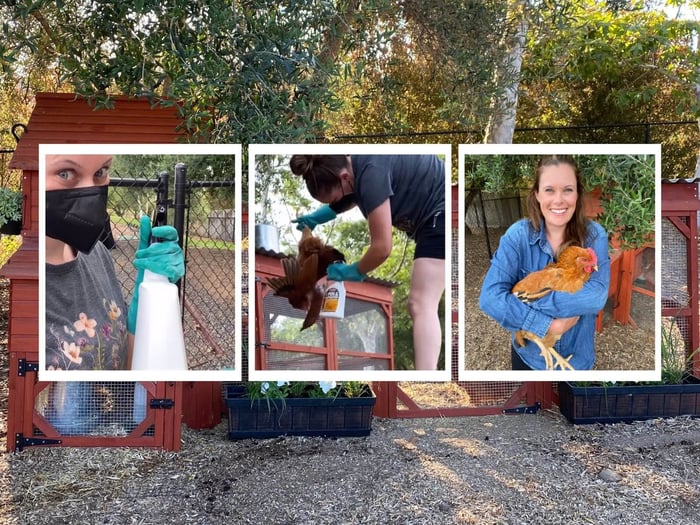
How It Felt as a Chicken Owner
“At first, I felt frustrated and worried. It’s overwhelming to see your flock uncomfortable and realize you’re crawling with chicken mites too. But once I got the right products and a plan in place, I felt relieved. It was empowering to see the problem disappear so quickly,” Paige shared.
She also discovered a simple trick she now swears by: “Learning how to flip a chicken upside down was huge. They actually relax, it keeps them from scratching you, and it makes it easy to check their wings and treat them. It looks silly, but it works.”
Looking back, Paige summed it up best: “It’s one of those experiences you hope you never have, but it taught me so much. Now I feel confident that if chicken mites ever come back, I’ll know exactly what to do.”
Stories like Paige’s remind us that every chicken keeper, no matter how experienced, faces challenges. At the Chicken Coop Company, we keep chickens too, and we know how important it is to share these real-life lessons. By passing along staff stories like this, we hope to help you feel prepared and supported as you care for your own backyard flock.
Bye Bye Boo Boos Wound Spray

$ 13.36
Bye-Bye Boo-Boos™: Boo-Boos Be Gone Bye-Bye Boo-Boos™ is a safe and natural wound care solution for your flock. Formulated with organic lavender and tea tree essential oils, as well as vitamin E, it gently soothes and helps heal wounds, cuts,… read more
FAQs
How can you tell if chickens have chicken mites?
Check under their wings and around the vent for small moving specks. Other signs include excessive scratching, feather loss, or pale combs.
Can chicken mites infest humans?
No, they don’t survive on humans long-term. You might feel itchy after handling infested chickens, but they won’t live on you.
What’s the best way to treat chicken mites?
A combination approach works best: spray the chickens with a poultry-approved mite spray, clean and treat the coop, replace bedding, and provide dust baths.
Are natural remedies enough for chicken mites?
Natural options like herbs and essential oils help with prevention, but a full infestation usually requires store-bought sprays or treatments to clear it completely.
How do you prevent chicken mites in the future?
Keep the coop clean and dry, use bedding that discourages pests, provide dust baths, and check your flock regularly.


